#Gallery Niepce
Text


「The Edge of Hope ~希望のきざし~」Dawton McFarlane Photo Exhibition
2024年2月27日(火)~3月10日(日)
Gallery Niepce
0 notes
Photo





Seen: Winterlicht
Who: 中藤毅彦 Takehiko Nakafuji / website
Where: Gallery Niepce, Shinjuku
When: October 10 - 18, 2020 (12-7pm)
Nakafuji is one of Tokyo's Street (photo) Kings- but he's also traveled the world, steadily building a huge archive of his characteristically contrast work.
Winterlicht is a collection of photographs he took while traveling Eastern Europe by train in the late 1990s with his Leica, Contax G2, and Fuji Neopan 1600 film. His images suggest a Europe comprised of mystery, isolation, and coldness. That they are a background for a personal journey is apparent- and part of their popularity. A master darkroom printer, his 16x20 prints- fittingly for the subject matter, done on Forte paper- are exquisite.
In 2001, Winterlicht was published as a photobook by WIDES- one of seven books he’s released so far- 2020 will see another one added to his bibliography with an upcoming exhibition at Zen Foto Gallery. Check shashasha.co for more of his work.
#中藤毅彦#Takehiko Nakafuji#Tokyo#Tokyo Photo Note#Winterlicht#Gallery Niepce#Contax G2#Leica#Neopan 1600
30 notes
·
View notes
Photo

STREET RAMBLER Takehiko Nakafuji ストリート・ランブラー 中藤毅彦 写真集
由攝影師・中藤毅彥(Takehiko Nakafuji)所主宰的藝廊「Gallery Niepce」所出版的個人攝影集。收錄中藤花費10年拍攝於紐約、哈瓦那、莫斯科、上海、柏林、巴黎及東京七大都市的街拍作品。像是聽到街道呼吸的氣息般,貼近地感受到都市���動,影像與秋山伸的設計和Sun M Color的印刷技藝和諧地融為一體,是一本完成度相當高的攝影作品集。本書同時為第24回林忠彥獲獎作品。
写真家・中藤毅彦が主宰する自主ギャラリー「ギャラリー・ニエプス」より出版された自身の写真集。10年を費やしてニューヨーク、ハバナ、モスクワ、上海、ベルリン、パリ、そして東京の7都市でのストリートスナップをまとめたもの。街の息づかいが聞こえてきそうなほどの生々しい都市の胎動が、秋山伸のデザイン、サンエムカラーの印刷技術とうまく合致し、完成度の高い写真集へと仕上がっている。ちなみに本書は第24回林忠彦賞受賞作。




購買 BUY
デザイン:秋山伸/edition.nord
印刷・製本:サンエムカラー
プリンティング・ディレクター:谷口倍夫
1000部発行/Limited edition of 1000
出版社 publisher:ギャラリー・ニエプス / Gallery Niepce
刊行年 year:2015
ページ数 pages:192
サイズ size:H316×W263mm
フォーマット format:ハードカバー/hardcover
言語 language:和文/英文-Japanese/English
付属品 attachment:
状態 condition:経年並みです。/ good
2 notes
·
View notes
Text
A Brief History of Photography: The Beginning
Photography. An art form invented in 1830s, becoming publicly recognised ten years later.
Today, photography is the largest growing hobby in the world, with the hardware alone creating a multi-billion dollar industry. Not everyone knows what camera obscura or even shutter speed is, nor have many heard of Henri Cartier-Bresson or even Annie Leibovitz.
In this article, we take a step back and take a look at how this fascinating technique was created and developed.
Before Photography: Camera Obscura
Before photography was created, people had figured out the basic principles of lenses and the camera. They could project the image on the wall or piece of paper, however no printing was possible at the time: recording light turned out to be a lot harder than projecting it. The instrument that people used for processing pictures was called the Camera Obscura (which is Latin for the dark room) and it was around for a few centuries before photography came along.
It is believed that Camera Obscura was invented around 13-14th centuries, however there is a manuscript by an Arabian scholar Hassan ibn Hassan dated 10th century that describes the principles on which camera obscura works and on which analogue photography is based today.

Camera Obscura is essentially a dark, closed space in the shape of a box with a hole on one side of it. The hole has to be small enough in proportion to the box to make the camera obscura work properly. Light coming in through a tiny hole transforms and creates an image on the surface that it meets, like the wall of the box. The image is flipped and upside down, however, which is why modern analogue cameras have made use of mirrors.
In the mid 16th century, Giovanni Battista della Porta, an Italian scholar, wrote an essay on how to use camera obscura to make the drawing process easier. He projected the image of people outside the camera obscura on the canvas inside of it (camera obscura was a rather big room in this case) and then drew over the image or tried to copy it.
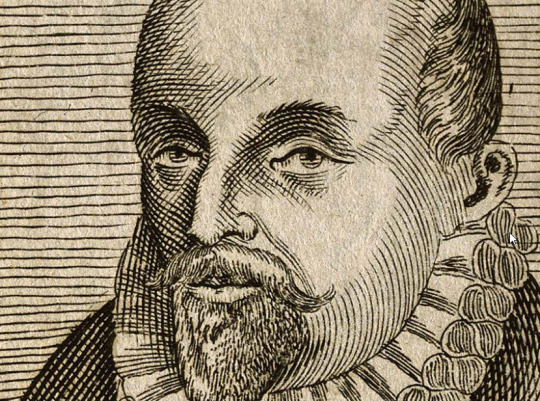
The process of using camera obscura looked very strange and frightening for the people at those times. Giovanni Battista had to drop the idea after he was arrested and prosecuted on a charge of sorcery.
Even though only few of the Renaissance artists admitted they used camera obscura as an aid in drawing, it is believed most of them did. The reason for not openly admitting it was the fear of being charged of association with occultism or simply not wanting to admit something many artists called cheating.
Today we can state that camera obscura was a prototype of the modern photo camera. Many people still find it amusing and use it for artistic reasons or simply for fun.
The First Photograph
Installing film and permanently capturing an image was a logical progression.
The first photo picture—as we know it—was taken in 1825 by a French inventor Joseph Nicéphore Niépce. It records a view from the window at Le Gras.

The exposure had to last for eight hours, so the sun in the picture had time to move from east to west appearing to shine on both sides of the building in the picture.
Niepce came up with the idea of using a petroleum derivative called "Bitumen of Judea" to record the camera's projection. Bitumen hardens with exposure to light, and the unhardened material could then be washed away. The metal plate, which was used by Niepce, was then polished, rendering a negative image that could be coated with ink to produce a print. One of the problems with this method was that the metal plate was heavy, expensive to produce, and took a lot of time to polish.
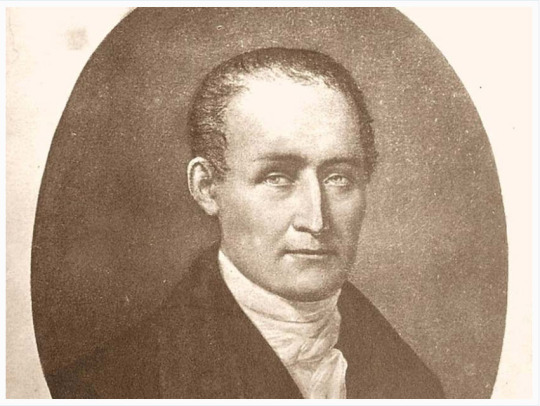
Photography Takes Off
In 1839, Sir John Herschel came up with a way of making the first glass negative. The same year he coined the term photography, deriving from the Greek "fos" meaning light and "grafo"—to write. Even though the process became easier and the result was better, it was still a long time until photography was publicly recognized.
At first, photography was either used as an aid in the work of an painter or followed the same principles the painters followed. The first publicly recognized portraits were usually portraits of one person, or family portraits. Finally, after decades of refinements and improvements, the mass use of cameras began in earnest with Eastman's Kodak's simple-but-relatively-reliable cameras. Kodak's camera went on to the market in 1888 with the slogan "You press the button, we do the rest".
In 1900 the Kodak Brownie was introduced, becoming the first commercial camera in the market available for middle-class buyers. The camera only took black and white shots, but still was very popular due to its efficiency and ease of use.

Color Photography
Color photography was explored throughout the 19th century, but didn't become truly commercially viable until the middle of the 20th century. Prior to this, color could not preserved for long; the images quickly degraded. Several methods of color photography were patented from 1862 by two French inventors: Louis Ducos du Hauron and Charlec Cros, working independently.
The first practical color plate reached the market in 1907. The method it used was based on a screen of filters. The screen let filtered red, green and/or blue light through and then developed to a negative, later reversed to a positive. Applying the same screen later on in the process of the print resulted in a color photo that would be preserved. The technology, even though slightly altered, is the one that is still used in the processing. Red, green and blue are the primary colors for television and computer screens, hence the RGB modes in numerous imaging applications.
The first color photo, an image of a tartan ribbon (above), was taken in 1861 by the famous Scottish physicist James Clerk Maxwell, who was famous for his work with electromagnetism. Despite the great influence his photograph had on the photo industry, Maxwell is rarely remembered for this as his inventions in the field of physics simply overshadowed this accomplishment.
The First Photograph With People
The first ever picture to have a human in it was Boulevard du Temple by Louis Daguerre, taken in 1838. The exposure lasted for about 10 minutes at the time, so it was barely possible for the camera to capture a person on the busy street, however it did capture a man who had his shoes polished for long enough to appear in the photo.

Notables in Photography
At one time, photography was an unusual and perhaps even controversial practice. If not for the enthusiasts who persevered and indeed, pioneered, many techniques, we might not have the photographic styles, artists, and practitioners we have today. Here are just a few of the most influential people we can thank for many of the advances in photography.
Alfred Stieglitz
Photography became a part of day-to-day life and an art movement. One of the people behind photography as art was Alfred Stieglitz, an American photographer and a promoter of modern art.
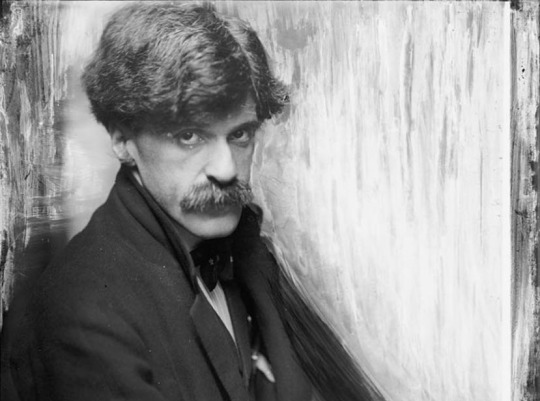
Stieglitz said that photographers are artists. He, along with F. Holland Day, led the Photo-Secession, the first photography art movement whose primary task was to show that photography was not only about the subject of the picture but also the manipulation by the photographer that led to the subject being portrayed.
Stieglitz set up various exhibitions where photos were judged by photographers. Stieglitz also promoted photography through newly established journals such "Camera Notes" and "Camera Work".
Example of Stieglitz's Work

Gaspard-Félix Tournachon (Felix Nadar)
Felix Nadar (a pseudonym of Gaspard-Félix Tournachon) was a French caricaturist, journalist and—once photography emerged—a photographer. He is most famous for pioneering the use of artificial lightning in photography. Nadar was a good friend of Jules Verne and is said to have inspired Five Weeks in a Balloon after creating a 60 metre high balloon named Le Géant (The Giant). Nadar was credited for having published the first ever photo interview in 1886.

Nadar's portraits followed the same principles of a fine art portrait. He was known for depicting many famous people including Jules Verne, Alexander Dumas, Peter Kropotkin and George Sand.
Example of Nadar's Work
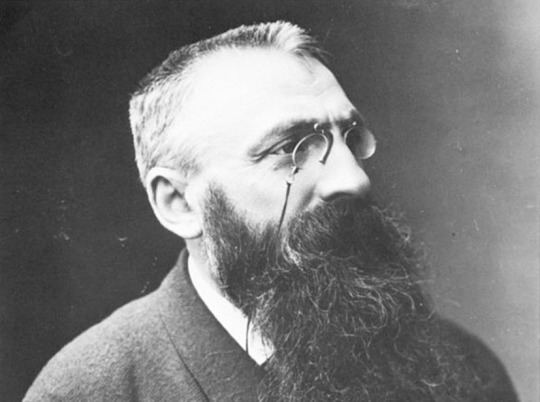
Henri Cartier-Bresson
Henri Cartier-Bresson was a French photographer who is most famous for creating the "street photography" style of photojournalism, using the new compact 35mm format (which we still use today). Around the age of 23, he became very interested in photography and abandoned painting for it. "I suddenly understood that a photograph could fix eternity in an instant," he would later explain. Strangely enough, he would take his first pictures all around the world but avoided his native France. His first exhibition took place in New York's Julien Levy Gallery in 1932. Cartier-Bresson's first journalistic photos were taken at the George VI coronation in London however none of those portrayed the King himself.
The Frenchman's works have influenced generations of photo artists and journalists around the world. Despite being narrative in style, his works can also be seen as iconic artworks. Despite all the fame and impact, there are very few pictures of the man. He hated being photographed, as he was embarrassed of his fame.
Example of Cartier-Bresson's Work
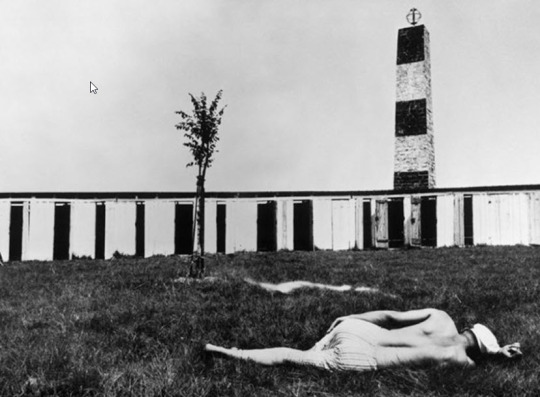
Check This Link To Know More About Photography : https://bit.ly/39Rpdsc
#studio serra photography#photo studio san diego#photography studio san diego#commercial real estate photography#commercial photography service#landscape photography#fine art photography#seascape photography#beachscape photography#scenic photography
6 notes
·
View notes
Photo

World Photo Day originates from the invention of the Daguerreotype process developed by Louis Daguerre & Joseph Nicephore Niepce in 1837📸 The first durable colour photograph was taken by Thomas Sutton in 1861 It was a set of three black-and-white photographs taken through red, green and blue filters📷 However, the photographic emulsions then in use were insensitive to the spectrum, so the result was very imperfect and the demonstration was soon forgotten📸 On August 19, 2010 World Photo Day hosted its first global online gallery. Almost 270 photographers shared their pictures and people from over 100 countries visited the website This marked the first official, globally reaching World Photo Day📷 As early as 1839, a selfie was clicked by American Robert Cornelius. Cornelius set his camera up, took the image by removing the lens cap and then running into frame. On the back he wrote “The first light picture ever taken 1839”📸 The first digital photograph was taken in 1957; almost 20 years before Kodak’s engineer invented the first digital camera📷 The photo is a digital scan of a shot initially taken on film which depicts Russell Kirsch’s son and has a resolution of 176×176!📷📸😊✌🏻 (at Dhirajlal Gandhi College of Technology) https://www.instagram.com/p/CEOXfM2M3VM/?igshid=v6gk587erl42
0 notes
Photo

明日からのこちらの写真展にわかみほがモデルをした写真も展示されます。 機会があれば是非のぞいてみてくださいませ! (Gallery Niepce)
2 notes
·
View notes
Text
Daguerrotipo

(Louis Jacques Daguerre. Fuente: https://es.m.wikipedia.org/wiki/Archivo:Louis_Daguerre_2.jpg)
El daguerrotipo fue el primer procedimiento conocido en el año 1839 y fue desarrollado por Louis Daguerre a partir de las experiencias previas de Niepce y y fue dado a conocer en Paris en la Academia de Ciencias de Francia.
El daguerrotipo se caracteriza por que la imagen se forma sobre una superficie de plata pulida, aunque sólo se necesita que la cara sea plateada, así que se puede usar cualquier material.

(Ejemplo de un marco con estuche de daguerrotipo. Fuente: http://www.artgallery.sa.gov.au/noye/Dags/Dag_cons.gif)
La imagen está formada por partículas microscópicas de aleación de mercurio y plata por que es revelado con vapores de mercurio, previamente expuesta a vapores de todo para la fotosensibilidad.
Entre 1836 y 1838, Daguerre realizó muchos ensayos previos a la publicación. En abril obtuvo la vista "Boulevard du temple" cpn exposición de cerca de 10 minutos. Se considera la primer fotografía en que aparece la silueta de una persona (un cliente de un limpiabotas).

(Boulevard du temple, Louis Daguerre 1839, París. Fuente: http://www.math.yorku.ca/SCS/Gallery/images/daguerre454bg.jpg)
En 1839 el gobierno francés compró el procedimiento para que todos pudiese usarlo sin patente y se dieron indicaciones en los periódicos para que cualquiera pudiese hacerlo por su cuenta, pero las cámaras comerciales fueron fabricadas por el cuñado de Daguerre, Alphonse Girox.
El daguerrotipo fue coetáneo con otros procedimientos como el calotipo de Fox Talbot, pero en 1855 se impuso el procedimiento de negativo de vidrio al colodión humero y la copia en papel de albúmina.
Daguerrotipo en México
En el diario de México, el Cosmopolita, del 26 de febrero de 1840 se anunció la rifa de un aparato diseñado por el inventor francés Louis Jacques Daguerre. Un equipo completo de daguerrotipo y 80 láminas de plaqué fuer lo primero en llegar a México y con esto comenzaron a especializarse las personas y en poco tiempo se abrieron estudios fotográficos, pero su precio era muy elevado y sólo personas con bastante dinero tenían acceso a el.
En sus primeros años, la fotografía se trataba más que nada de retratos, aunque también hubo paisajes, ruinas precolombinas, vistas de la ciudad y alguno que otro hecho bélico.

(Osorio Alarcon, F. “Los Daguerrotipos Mexicanos …” en “México en el Tiempo, revista de Historia y Conservación”, año 3, No. 22 (Enero/Febrero 1998) Fuente: https://masdemx.com/wp-content/uploads/2016/04/veracruz-1839-compuesto-george-eastman-house-www-geh-org.jpg)
Fuentes: http://meristation.as.com/zonaforo/topic/1426862/
https://es.m.wikipedia.org/wiki/Louis_Daguerre
https://es.m.wikipedia.org/wiki/Daguerrotipo
https://www.mexicodesconocido.com.mx/historia-de-la-fotografia-en-mexico.html
https://masdemx.com/2016/04/esta-la-fotografia-antigua-mexico/
0 notes
Photo

誰のと表記されずシャッフル展示された写真たち。都会の一瞬が見れた三人展。 #gallery #niepce #三人展 #ハービー山口 #herbieyamaguchi #leica #summitar (Gallery Niepce)
0 notes
Text
History Of Photography
Official Website: History Of Photography
Have you ever before asked yourself where contemporary digital photography originated? While we are now relocating into the digital age and away from movie, the illumination techniques as well as various other digital photography techniques began in the 1820’s. Niepce and also Daguerre were the first innovators of modern-day digital photography. They used a chemical component from silver as well as chalk, which darkens when subjected to light. This kind of technology utilized a glass unfavorable to seal the picture.
From the very early cams seen in western films we have actually moved on to hand-operated cams with movie. The hands-on electronic cameras used a theory of setting up shots.
Focusing and depth of area are additionally important when establishing the aperture on your camera. You might have discovered in a dark room without flash your video camera takes a while to inscribe the image on the negative. The lack of light induces a requirement to expose the movie longer to acquire the image where as more light will have the shutter moving at a faster rate.
From the hands-on electronic cameras we relocated right into the automated. The video camera came to be lighter. The shutter rate and aperture was set right into the camera by the setups. ISO became crucial. ISO is the film rate. Instead of taking minutes to set up a shot you simply had to select the right setting and hold the button down to focus. Lots of video cameras came as automated with hand-operated options for those that still suched as to deal with digital photography as an artistic occupation.
Digital cams are the brand-new era in digital photography. Currently we can see the picture we take without making use of film as well as negatives. We can send the pictures to every one of our buddies as well as use our house printers to develop prints. Photography has moved from the focus of taking the excellent shot with an ability birthed to a few to everybody taking photos.
This is not to claim digital photography as well as photographers will not remain. There is still the requirement for top quality in taking professional quality pictures. Light level of sensitivity is still essential when managing a digital electronic camera as well as unless you invest a lot, you will discover top quality of photos is still missing. Picture strategies lay within the lighting gave whether synthetic or all-natural for the subject.
You may ask yourself how to produce a picture in a dark area like a gallery to show to your loved ones. Knowing the past digital photography techniques will certainly aid you in attaining that perfect photo with your digital electronic camera. Photography may have come from with couple of people, yet we can see the improvements their developments have led us to currently.
From the very early video cameras seen in western films we have actually moved on to hand-operated electronic cameras with film. Several cams came as automatic with hand-operated choices for those that still liked to deal with photography as a creative job.
Digital cameras are the brand-new period in photography. Light level of sensitivity is still crucial when dealing with an electronic camera and unless you invest a whole lot, you will certainly find top quality of pictures is still missing. Recognizing the previous digital photography methods will aid you in acquiring that excellent photograph with your digital camera.
0 notes
Text
History Of Photography
Official Website: History Of Photography
Have you ever before asked yourself where contemporary digital photography originated? While we are now relocating into the digital age and away from movie, the illumination techniques as well as various other digital photography techniques began in the 1820’s. Niepce and also Daguerre were the first innovators of modern-day digital photography. They used a chemical component from silver as well as chalk, which darkens when subjected to light. This kind of technology utilized a glass unfavorable to seal the picture.
From the very early cams seen in western films we have actually moved on to hand-operated cams with movie. The hands-on electronic cameras used a theory of setting up shots.
Focusing and depth of area are additionally important when establishing the aperture on your camera. You might have discovered in a dark room without flash your video camera takes a while to inscribe the image on the negative. The lack of light induces a requirement to expose the movie longer to acquire the image where as more light will have the shutter moving at a faster rate.
From the hands-on electronic cameras we relocated right into the automated. The video camera came to be lighter. The shutter rate and aperture was set right into the camera by the setups. ISO became crucial. ISO is the film rate. Instead of taking minutes to set up a shot you simply had to select the right setting and hold the button down to focus. Lots of video cameras came as automated with hand-operated options for those that still suched as to deal with digital photography as an artistic occupation.
Digital cams are the brand-new era in digital photography. Currently we can see the picture we take without making use of film as well as negatives. We can send the pictures to every one of our buddies as well as use our house printers to develop prints. Photography has moved from the focus of taking the excellent shot with an ability birthed to a few to everybody taking photos.
This is not to claim digital photography as well as photographers will not remain. There is still the requirement for top quality in taking professional quality pictures. Light level of sensitivity is still essential when managing a digital electronic camera as well as unless you invest a lot, you will discover top quality of photos is still missing. Picture strategies lay within the lighting gave whether synthetic or all-natural for the subject.
You may ask yourself how to produce a picture in a dark area like a gallery to show to your loved ones. Knowing the past digital photography techniques will certainly aid you in attaining that perfect photo with your digital electronic camera. Photography may have come from with couple of people, yet we can see the improvements their developments have led us to currently.
From the very early video cameras seen in western films we have actually moved on to hand-operated electronic cameras with film. Several cams came as automatic with hand-operated choices for those that still liked to deal with photography as a creative job.
Digital cameras are the brand-new period in photography. Light level of sensitivity is still crucial when dealing with an electronic camera and unless you invest a whole lot, you will certainly find top quality of pictures is still missing. Recognizing the previous digital photography methods will aid you in acquiring that excellent photograph with your digital camera.
0 notes
Photo

Gallery Niepce, Shinjuku
Konica Recorder
190 notes
·
View notes
Text
Fine Art Photography
What is Fine Art Photography ?
Referred to likewise as "photographic craftsmanship", "imaginative photography" et cetera, the expression "compelling artwork photography" has no all around concurred significance or definition: rather, it alludes to an uncertain classification of photos, made as per the inventive vision of the cameraman. The essential thought behind the class, is that rather than simply catching a sensible interpretation of the subject, the picture taker is expecting to deliver a more individual - normally more reminiscent or environmental - impression. One may streamline this, by saying that artistic work photography depicts any picture taken by a camera where the expectation is stylish (that is, a photograph whose esteem lies fundamentally in its magnificence - see, Esthetics) instead of logical (photographs with logical esteem), business (item photographs), or journalistic (photographs with news or illustrative esteem). (See additionally: Is Photography Art?) Artistic photographs have been utilized as often as possible in composition workmanship (all the more accurately, photocollage), by specialists like David Hockney (b.1937); and in photomontage, by Dadaists like Raoul Hausmann (1886-1971), Helmut Herzfelde (1891-1968) and Hanna Hoch (1889-1979), by Surrealist craftsmen like Max Ernst (1891-1976), by the cutting edge Fluxus aggregate in the 1960s, and by Pop craftsmen like Richard Hamilton. Photographs may likewise be joined into blended media establishment craftsmanship, and gathering workmanship. Today, photography is displayed in a significant number of the best exhibitions of contemporary craftsmanship around the globe.

History of Technical Developments
Created in the early many years of the nineteenth century and the subject of various advances amid the period of Victorian craftsmanship, photography quickly caught more detail and data than conventional strategies for replication, such as painting or model. The specialized development of photography was a piecemeal issue, despite the fact that a noteworthy jump was the revelation of light-delicate emulsions in 1839, empowering cameras to take high contrast photos. Other vital specialized advances ever of, incorporated the accompanying.
Photoetching was created in 1822-5 by the Frenchman Joseph Niepce (1765-1833), who additionally made the primary photo from nature in 1826. Enhancements ( in the decrease of introduction time, the daguerreotype) were found by German Professor Heinrich Schultz (1687-1744) and French physicist Louis Daguerre (1787-1851), in 1837, with Daguerre being in charge of the main ever photo of a man in 1839. In parallel to this, in 1832, the French-Brazilian craftsman and innovator Hercule Florence (1804-79) had formed a comparable procedure, called Photographie, while the English creator and pioneer camera master William Fox Talbot (1800-77) was caught up with developing the calotype procedure, which delivered negative pictures. His 1840s research into photograph mechanical generation prompted the disclosure of the photoglyphic etching process, the antecedent to photogravure. The trial British researcher John Herschel (1792-1871) concocted the cyanotype procedure and was the first to coin the expressions "photography", "negative" and "positive". In 1851, Frederick Scott Archer (1813-57) declared the discoveries of his exploration into the wet plate collodion process, which essentially enhanced the openness of photography for the general population, as did the American pioneer George Eastman's 1884 presentation of move film as a trade for photographic plates. In 1908, the French researcher Gabriel Lippmann (1845-1921) was granted the Nobel Prize for Physics for his enhancements in photographic shading multiplication. The improvement of the photographic procedure was studded with such revelations and innovations, and numerous different advances in photographic glass plates and printing techniques were made amid the nineteenth century.
Victorian types included John Edwin Mayall (1813-1901), who snapped a portion of the soonest photos of Queen Victoria and Prince Albert; Julia Margaret Cameron (1815-79), noted for her photographic pictures and legendary pictures; and Oscar Gustave Rejlander (1813-75), the Swedish cameraman and photomontage master who worked with Charles Darwin on The Expression of the Emotions in Man and Animals.
Twentieth century progresses in photographic innovation have been ruled by enhancements in film and cinematography, prompting new imaginative structures, for example, movement craftsmanship, kid's shows and video workmanship.

Use of Photography in Art
Photography advanced from the camera obscura, an instrument that anticipated a picture through a little gap, enabling the craftsman to make a precise following of a protest or scene. The primary say of its utilization as an attracting help showed up Magia Naturalis, a logical treatise by the Italian researcher Giambattista della Porta. Numerous Old Masters from the seventeenth and eighteenth century, including Jan Vermeer (1632-75), and Canaletto (1697-1768), are accepted to have utilized it in their outlining.
With the spread of camera-photography from 1840 onwards, the utilization of photographs ended up regular in the creation of both representation workmanship and in addition scene painting. Numerous figure painters and portraitists started utilizing the new medium of photography notwithstanding models, to decrease sitting-time. The immense nineteenth century American pragmatist painter, Thomas Eakins (1844-1916), for example, was an eager client of the camera, who utilized photography as a feature of his quest for authenticity, as opposed to as an alternate route or help to sythesis and point of view. Photography was additionally utilized via scene craftsmen - strikingly the French Impressionist painters, as a guide to plein-air painting. For more points of interest, see: History of Art.

Photography as a Fine Art
In spite of the fact that by the late nineteenth century, photography had turned out to be acknowledged in both Britain and America as a minor visual workmanship - due to some degree to the limited time endeavors of magazines like "American Amateur Photographer", and in addition bodies like the "General public of Amateur Photographers", the "General public of Amateur Photographers of New York", the "Photographic Society of Philadelphia", and the "Boston Camera Club" - a few photographic specialists were quick to demonstrate that the new medium could be similarly as masterful as different sorts of craftsmanship, such as drawing and painting. Two such specialists were Alfred Stieglitz (1864-1946) and Edward Steichen (1879-1973). Both were instrumental in making photography a compelling artwork, and Stieglitz specifically (and furthermore his significant other, Georgia O'Keeffe) was in charge of bringing it into gallery accumulations. A point of interest occasion happened in 1902, with Stieglitz's arrangement in America of Photo-Secession, a relationship of imaginative picture takers, and the production of its magazine Camera Work (1902-17), which quickly turned into a gathering for current specialty of different types. In 1905, Stieglitz and Steichen established the "291" display in New York, a setting spend significant time in cutting edge workmanship, prominently photos, artistic creations and figures.
0 notes
Text
160 donne, 160 foto
di Andrea Scandolara
--- Fare una mostra di fotografie scattate solo da donne potrebbe sembrare inopportuno in un clima nel quale si cerca la parità di genere; ma vedere che una singola mostra raggruppa 160 autrici che hanno contribuito alla storia della fotografia fa cambiare subito opinione; il loro numero indica già una parità e non da oggi ma già dai primi anni del 1900, ben prima della rivoluzione femminista degli anni ’60 e ’70.
Encomiabile l’operazione che hanno fatto Silvia Bianco, Ken Damy e Walter Liva, i curatori della mostra Donne&fotografia appena aperta a Udine dal CRAF in una centrale chiesa sconsacrata della città.
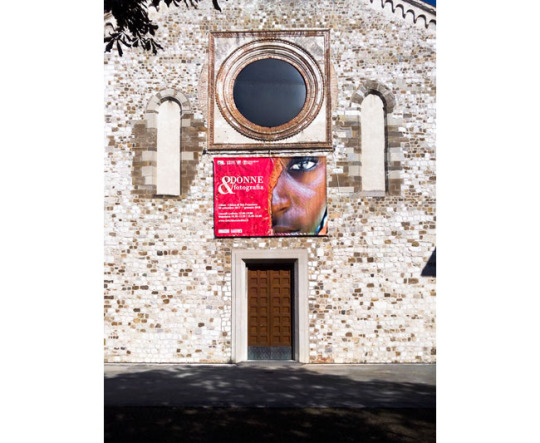
Raccogliere 160 foto di autrici internazionali non deve essere stato facile: il prestito è stato accordato da una decina di privati, gallerie e fondazioni, una di queste della Repubblica Ceca; ma tutto fa supporre una eccellente conoscenza della storia della fotografia, per lo meno per il periodo che va dal 1900 ad oggi.
E non deve essere stato facile creare un percorso espositivo trattandosi di foto a colori e in bianconero, di corpi, paesaggi e oggetti, di periodi ben diversi tra loro. Proprio questa eterogeneità ha imposto accostamenti per epoche precise (decenni) all’interno delle quali le differenze dei generi fotografici si scatenano.
Il percorso, assai complesso, tocca differenti epoche e culture d’Europa, delle Americhe, Africa, Asia, Australia. Le frontiere non esistono, nemmeno i confini per la creatività, questo è il miracolo della fotografia.

Tuttavia qui non è in gioco il riscatto del genere femminile impegnato in una professione un tempo prevalentemente maschile, ma per dirlo con le parole di Ken Damy “il vero scopo di questa importante esposizione è di verificare se le differenze stilistiche e di contenuto siano poi così evidenti”.
E’ innegabile che esista un modo femminile di guardare al mondo e questa già potrebbe essere una delle risposte. Il concetto è rafforzato dalle parole di Angelo Bertani, presidente del CRAF di Spilimbergo: “nel campo della fotografia la sensibilità femminile si esprime sopratutto nel saper dare la dovuta importanza agli stati d’animo più intimi e di conseguenza anche ai dettagli più nascosti e apparentemente trascurabili.”
In virtù di una diversa sensibilità della donna si dovrebbe riscontrare “una minor rudezza d’approccio alle cose, una gentilezza di tratto anche là dove l’impegno documentario è maggiore, una pietas più difficile da rintracciare altrove, un’attenzione non retorica per il corpo femminile, analizzato senza eccessivi e timorati pudori.” (nota 1)
D’accordo, ma ci vorrà impegno nel guardare le fotografie, spesso queste differenze non sono così evidenti.
La mostra è imperdibile: 120 anni di capolavori messi insieme, autori opss... autrici capisaldi della fotografia, le cui opere abbiamo ammirato più volte su libri e antologie, non lasciano dubbi sull’importanza dell’iniziativa.
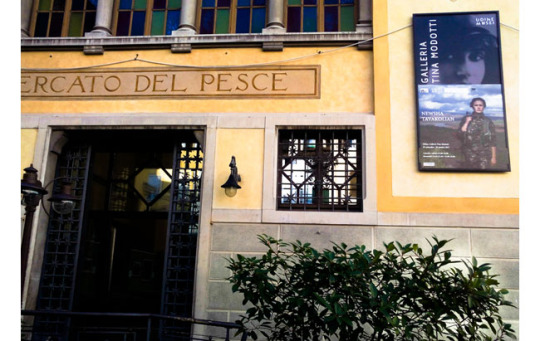
Le sorprese del Friuli non si fermano qui. Alla Galleria Tina Modotti di Udine (ex Mercato del pesce) è aperta fino al 29 ottobre, sempre a cura del CRAF una mostra di Newsha Tavakolian, giovane fotografa iraniana dal 2015 membro della prestigiosa Agenzia Magnum. Altra fotografa, peraltro presente nella collettiva di cui sopra, impegnata nei reportage, compresi quelli in zone di guerra, molto richiesti dai periodici internazionali. Sono in mostra immagini a colori di grande formato dove il soggetto è trattato con una sensibilità diversa che dichiara apertamente un approccio che va oltre quello documentario. E’ un messaggio che non arriva soltanto dal soggetto ma anche dallo stile, un suo stile inconfondibile.

Tavakolian a 36 anni è già richiestissima dalla stampa internazionale e i riconoscimenti per i suoi lavori non si contano più. Ma è curioso un episodio che non fa che aumentare la stima che abbiamo per lei. Nel 2014 vinse un premio messo a disposizione da una fondazione di un banchiere francese: 50.000 euro più una mostra e un volume con le sue foto. Il lavoro descriveva le condizioni di vita in Iran di coloro che erano stati adolescenti durante la rivoluzione komeinista. Il banchiere chiese alla Tavakolian di cambiare il titolo al lavoro e di togliere il testo che lei aveva preparato a corredo. “Non sono un fiore delicato, voglio solo prendermi la responsabilità del mio lavoro”, fu la risposta mentre restituiva il premio compreso l’importo in denaro. Successivamente ha usato parole pesanti e decise in merito all’influenza del mondo occidentale nel tentativo di condizionare l’arte iraniana e di conseguenza i suoi lavori. Coerenza.
(nota 1) Romano Vecchiet, Dirigente del Servizio Integrato Musei e Biblioteche
Donne&fotografia
dal 30.09.2017 al 7.01.2018 - Chiesa di San Francesco, Udine - orario: venerdì e sabato 15.00-18.00, domenica 10.30-12.30, 15.00-18.00. Ingresso libero.
Le autrici sono: Fatima Abbadi, Berenice Abbott, Umida Akhmedova, Laure Albin Guillot, Lola Alvarez Bravo, Diane Arbus, Eve Arnold, Marina Ballo Charmet, Letizia Battaglia, Shobha Battaglia, Inez Baturo, Marina Berio, Ruth Bernhard, Rosangela Betti, Lynn Bianchi, Jelena Blagovic, Irena Blühovà, Hou Bo, Claude Bodier Batho, Margaret Bourke White, Marianne Brandt, Marilyn Bridges, Barbara Brooks Morgan, Lynn Butler, Marcella Campagnano, Lisetta Carmi, Ghitta Carell, Frances Aretta Carpenter, Carla Cerati, Denise Colomb, Augusta Conchiglia, Gabriella Csozso, Imogen Cunningham, Judy Dater, Liliane de Cock Morgan, Pamela de Marris, Diana Y Marlo, Delphine Diallo, Desiree Dolron, Gertrude Duby, Rena Effendi, Angele Etoundi Essamba, Gertrude Fehr, Trude Fleishmann, Rosa Foschi, Barbara Forshay, Martine Franck, Gisèle Freund, Susan Friedman, Toto Frima, Toni Frissell, Enikô Gàbor, Serena Gallini, Flor Garduño, Nan Goldin, Dorothee Golz, Henriette Grindat, Anne Marie Grobet, Shu Hamaura, Ester Havlová, Annemarie Heinrich, Florence Henri,Majlinda Hoxha,Regina Hübner,Zann Huizhen Huang,Elizaveta Ignatovic, Connie Imboden, Irina Ionesco, Graciela Iturbide, Monique Jacot, Bruna Kazinoti,Uma Kinoschita, Jaschi Klein, Sabine Korth, Germaine Krull, Dorothea Lange, Rebeka Legovic, Annie Leibovitz, Gerda Leo, Jana Leon, Elaine Ling, Monia Lippi, Mari Mahr, Rebecca Major, Mary Ellen Mark, Cindy Marler, Paola Mattioli, Marie Maurel de Maillé, Ruth Mayerson Gilbert, Janice Mehlman, Sheila Meitzner, Susan Meiselas, Manuela Metalli, Lee Miller, Tina Modotti, Lucia Moholy, Edit Molnar, Daniela Monaci, Sarah Moon, Inge Morath, Galina Moskaleva, Eleni Mouzakiti, Maria Mulas, Shirin Neshat, Jeanine Niepce, Cristina Nunez, Eleonora Olivetti, Cristina Omenetto, Elizabeth Opalenik, Ana Opalic, Orlan, Lina Pallotta, Slavka Pavic, Lynwood Pelham, Dita Pepe, Anna Pisula Mandziej, Marion Post Wolcott, Joan Powers, Lieve Prins, Agnese Purgatorio, Bettina Rheims, Leni Riefenstahl, Ursula Richter, Andre Rogi, Louise Rosskam, Ernestine Ruben, Marialba Russo, Katarina Sadowski, Sara Saudkova, Jane Schreibman, Cindy Sherman, Dayanita Singh, Sandy Skoglund, Viera Slavikovà, Vee Speers, Camila Sposati, Elisabeth Sunday, Karin Székessy, Brigitte Tast, Newsha Tavakolian, Joyce Tenneson, Olga Tobreluts, Naomi Toki, Ivana Tomanovic, Giuliana Traverso, Linda Troeller, Deborah Tuberville, Doris Ulmann, Carla van de Puttelaar, Danielle van Zadelhoff, Tereza Vickovà, Verena von Gagern, Sabine Weiss, Katarzyna Widmańska, Alice Wielinga, Susannah Wilshire Torem, Wong Wo Bik, Wanda Wulz, Mariana Yampolsky, Madame Yevonde, Yva, Cristina Zelich, Erszebet Zinner, Maria Zorzon.
Newsha Tavakolian
dal 29.9 al 29.10.2017 - Galleria Tina Modotti (ex Mercato del pesce), via Paolo Sarpi, Udine - orario: venerdì e sabato 15.00-18.00, domenica 10.30-12.30, 15.00-18.00. Ingresso libero.
#Donne&fotografia#Silvia Bianco#Ken Damy#Walter Liva#Angelo Bertani#CRAF#Tina Modotti#Newsha Tavakolian#Magnum photos#Romano Vecchiet#Andrea Scandolara
0 notes
Text
Photography Backdrops
Digital photography is the art and also a process of developing the study in still life photos by recording radiation on a delicate tool. This is photo movie or electronic imaging sensors that can capture the picture. Light is typically utilised rather than radiation in many cases of digital photography. When the light is reflected from the items that are being obtained, the things from an actual photo on a light-sensitive film or plate inside the camera using a timed exposure. This picture could then be turned into a visual image for many objectives.
History of Digital Photography:
Photography was initially created in the 19th century. It produced an entire brand-new means to capture pictures instead of making use of paints and sculptures. The useful procedure of digital photography dates back to the 1820’s however when chemical photography was thought about. The very first photoetching was generated in 1822 by Nicephore Niepce. He and Louis Daguerre developed a new way to take images quicker utilising silver and chalk. The first ever photo taken of a person was taken in 1839 with the new creation. Unfavourable images were produced in 1840 by a guy named Talbot; his print is the oldest well-known adverse out there to now. The plan was created by John Herschel in 1819 by the use silver halides. His exploration permitted pictures to be long-term, as well as made the first glass unfavourable in 1839.The wet plate collodion process of digital photography was utilised extensively in between 1852 as well as the late 1860’s before the dry plate was presented. It entailed a favourable photo on glass, positive image on metal, and after that the negative that was printed on salt paper. Developments in photography continuously expand throughout the 19th century. The plates were changed with a movie which is used today in 1884. Colours were presented in 1908 by Gabriel Lippmann who won the Nobel Laureate in Physics for this development.
Use Photography:
A lot of people acquired the interest in digital photography for several factors given that it has been introduced. Among the most significant usages was for researchers to tape and study motions precede, animals, as well as people. Artists also got interest in photography because they like to catch truth, and also transform fact right into fantasy by misshaping the images that they take producing art from these photos for display screen. The armed force also utilises digital photography for surveillance and day storage. Daily individuals use digital photography to capture unique moments in life, and also to preserve those times in the pictures as well as a resource for home entertainment.
Manufacturing of Photography:
Amateur production of digital photography is when digital photography is done in a not for earnings means, and also as a leisure activity. An individual who is an amateur might have the abilities of an expert, but do not wish to transform their pictures into a professional sort of work. Commercial manufacturing of photography is when the photographer is paid for their photography as well as made use of for some various things. Several of these things consist of advertising and marketing, style, criminal offence scene digital photography, the study in still life, galleries, food, editorial, photojournalism, wedding photography and various other professional portraits, landscape, paparazzi, and wildlife photography. They are then created in various outlets such as publications and newspapers. The photographers are paid for their work.Photography has since been a very long time leisure activity and fun task for individuals all over the globe. There is a dark background included with photography, lots of functions for photography, as well as a general love of photography around the world. Photography may not be for everyone. However, it is a leisure activity or task for some. Whether the photographer wants to utilise their images for themselves or an earnings,digital photography is something that helps the globe walk around to now.
0 notes
Text


#写真展のDMを淡々とあげる
鼻崎裕介「東京」
2019.11.8-10
2019.11.15-17
Gallery Niepce
1 note
·
View note

